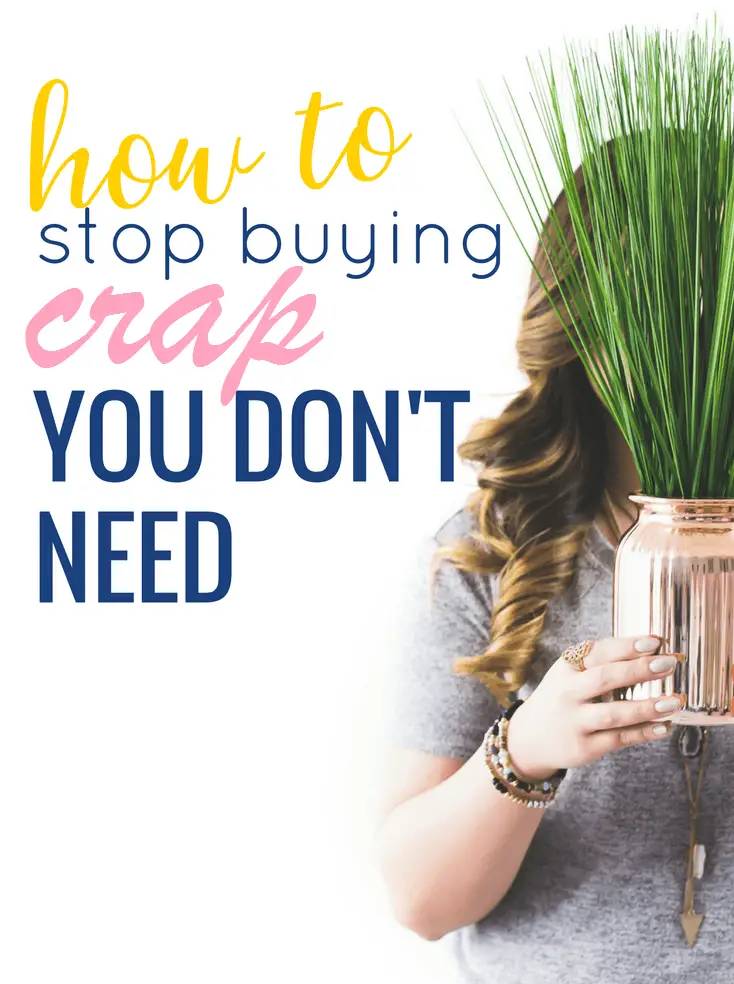Contributing writer for Wake Up World
“You work in a job you hate, to buy stuff that you don’t need, to impress people that you don’t like.” ~ Fight Club
We might think we are “getting a steal” with the latest clearance sale, but rarely do we consider the true cost of consumerism — in ecological, human and economic terms. When we consistently buy cheap, mass produced, flimsy products made in places like China, we’re investing in a shoddy future all around. Everyone loses — workers, our local economies and the environment.
“Landfills swell with cheap discarded products that fail early and cannot be repaired. Products are made psychologically obsolete long before they actually wear out. A generation is growing up without knowing what quality goods are. Friendship, family ties and personal autonomy are only promoted as a vehicle for gift giving and the rationale for the selection of communication services and personal acquisition. Everything becomes mediated through the spending of money on goods and services. Human beings who cannot spend become worthless.” [source]
Unfortunately, we’ve been conditioned as a culture to immediately go for the “cheapo bargain” — not realizing we end up paying more in the end because we have to replace shoddy merchandise — which also produces mountains of toxic waste (especially with electronics). Don’t forget, many of our “must-have’s” are also produced by people in conditions close to slave labor.
[pro_ad_display_adzone id=”110028″]
Thankfully, there’s a better way. We can go back to investing in solidly made products — including clothing, electronics, furniture and cars. Even though I’m on a tight budget with a daughter to raise, I decided long ago to only purchase quality, well-made items — which means I have to delay gratification and save up for whatever it may be. I end up buying less and I’m happier for it. I also save money in the long-run. I’m able to enjoy fewer (yet beautifully made) items — for a very long time. Or, we can take it a step further and find inspiration from one creatively-minded artist by going on a complete “clothes shopping fast” for a year.
The Art of Not Shopping
Sarah Lazarovic, author of “A Bunch of Pretty Things I Did Not Buy” writes:
“One of the grossest things I’ve ever seen was the garbage room the day I moved out of my freshman dorm. It was a shrine to waste, to hastily bought and easily discarded crap… the detritus of a year of misguided shopping.”
So begins her journey of questioning our insatiable desire for “stuff.” With the above observation, she includes an image, one of a “room overflowing with clothes, furniture, and “too many pairs of slutty underwear.”
“What follows is an apt description of a girl’s coming-of-age against the backdrop of late-capitalism – a historical moment that shouts, “You are what you buy!”’ observes Shannon Tien of The Globe and Mail.
Years later, after Lazarovic had married her (comfortably wealthy) husband, and realizing she has bought “far too much crap” on the Internet, she decided to confront her impulsive consumerism head-on by not buying any clothes for a year. Instead, she painted each item she craved. After the experiment had run its course, she shifted her shopping habits to focus on quality rather than quantity. “In an ode to Michael Pollan and the slow food movement, she coins the phrase “Buy clothes. Not too many. Mostly quality.”’
As Lazarovic draws her story to a close as a reformed shopaholic and consumer, who once believed “you are what you buy!” — she now realizes that “you are what you choose not to buy.”
While her story gives us pause for thought about our own consumer oriented shortcomings, not everyone has the creative inclination or desire to paint instead of shop. But there are plenty of other strategies available to curb our yearning for more stuff. Here are a few ideas to get the ball rolling.
Seven Ways to Tame the Beast of Consumerism
Embrace the 45-minute rule. “If you will not use an item for at least 45 minutes per day, you do not need to own it,” says blogger Bridget of Money After Graduation.
Practice the “HALT” method. Don’t buy anything when you’re Hungry, Angry, Lonely or Tired.
Forget autofill. Make online purchases more difficult and time-consuming by removing autofill information for both your credit cards and Paypal.
Enjoy the simple things in life. When we don’t take the time to engage in things we love — reading, time in nature, good conversation with friends and family — we begin to substitute, which usually involves spending money.
[pro_ad_display_adzone id=”110317″]
Only purchase long-lasting goods. Shop sites like BuyMeOnce that aim to “throw away our throwaway culture” through products that “don’t break the bank, don’t break the planet… that don’t break at all!”
Delay gratification. This is a tough one in our instant gratification geared culture. But it pays off in the end. Studies have shown that children who can delay gratification for something they want are more successful as adults. When you see a “must-have” item, walk away for a while — at least a week. The longer the better. Many times, the desire will vanish and you realize you really didn’t need it after all.
Banish credit cards from you life. Not only do we end up paying more once interest rates are factored in, but credit cards encourage impulse buying like nothing else. There’s the old “keep a credit card for emergency’s” spiel, but I don’t buy it, no pun intended. Since the advent of debit check cards, where you can use your debit card anywhere credit cards are accepted — and have purchases directly subtracted from your bank account — there really isn’t any point in going into debt. I know firsthand from experience — I haven’t used a credit card in over 12 years. This from the girl who used to have $25K worth of credit on her cards. For emergencies, I keep a savings account.
Do I Really Need It? And Other Important Questions
For additional inspiration on how to reign-in impulsive shopping habits, Lifehacker recommends asking the following before making a purchase:
- Will it end up on the “crap” list one day?
- Is this a planned purchase?
- Where am I going to put it?
- Have I included this in my budget?
- Why do I want/need this?
When we look at the broader picture, everyone would like a beautiful world, where people are paid decent, liveable wages, the environment is protected and contentedness is cultivated through solid relationships of family, friends and local community. A good place to start is with thoughtful contemplation of what we do (and do not) purchase — and why. In the end, the buck stops with each one of us, so let’s make it count.
Article sources:
- www.theglobeandmail.com/…/sarah-lazarovics-graphic-memoir-a-bunch-of-pretty-things-i-did-not-buy
- www.yesmagazine.org/happiness/a-fun-way-to-stop-buying-things-you-dont-really-need-201609089
- www.huffingtonpost.com/2014/10/27/sarah-lazarovic-book-interview_n_6017260.html
- www.businessinsider.com/stop-buying-stuff-you-dont-need-2014-5
- www.stopbuyingcrap.com/how-to/howto-stop-buying-crap/
- www.verdant.net/society.htm
- www.newdream.org/programs/beyond-consumerism/rethinking-stuff/conscious-consumerism
About the author:
 Carolanne Wright enthusiastically believes if we want to see change in the world, we need to be the change. As a nutritionist, natural foods chef and wellness coach, Carolanne has encouraged others to embrace a healthy lifestyle of organic living, gratefulness and joyful orientation for over 13 years.
Carolanne Wright enthusiastically believes if we want to see change in the world, we need to be the change. As a nutritionist, natural foods chef and wellness coach, Carolanne has encouraged others to embrace a healthy lifestyle of organic living, gratefulness and joyful orientation for over 13 years.
Through her website Thrive-Living.net, she looks forward to connecting with other like-minded people from around the world who share a similar vision. You can also follow Carolanne on Facebook, Twitter and Pinterest.
Recommended articles by Carolanne Wright:
- Renowned Harvard Psychologist Says ADHD is Largely a Fraud
- Antibiotics Shown to Impair Memory, Stop Growth of New Brain Cells
- Plastic Waste in the Ocean Will Outnumber Fish by 2050
- Mind Control, Subliminal Messages and the Brainwashing of America
- Plastic-Eating Mushroom Discovered in the Amazon Rainforest — A Solution for Our Trash Saturated World?
- Over 100 Scientific Studies Agree: Cannabis Annihilates Cancer
- Why Every Parent Should Consider Unschooling
- First U.S. City Produces More Electricity Than It Uses — With 100% Renewable Technology
- If You Care About Animals and the Earth, Here’s Why You Need to Boycott Palm Oil Immediately
- Basic Income Guarantee: A Surprisingly Cost-Effective Method for Eliminating Poverty
- A New Take on Sewage: How to Harness the Superpowers of Pee and Poo for Better Ecological and Human Health
[pro_ad_display_adzone id=”110027″]







